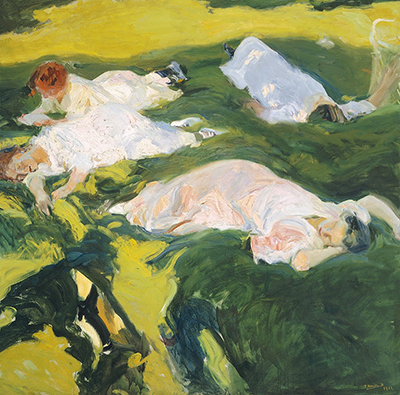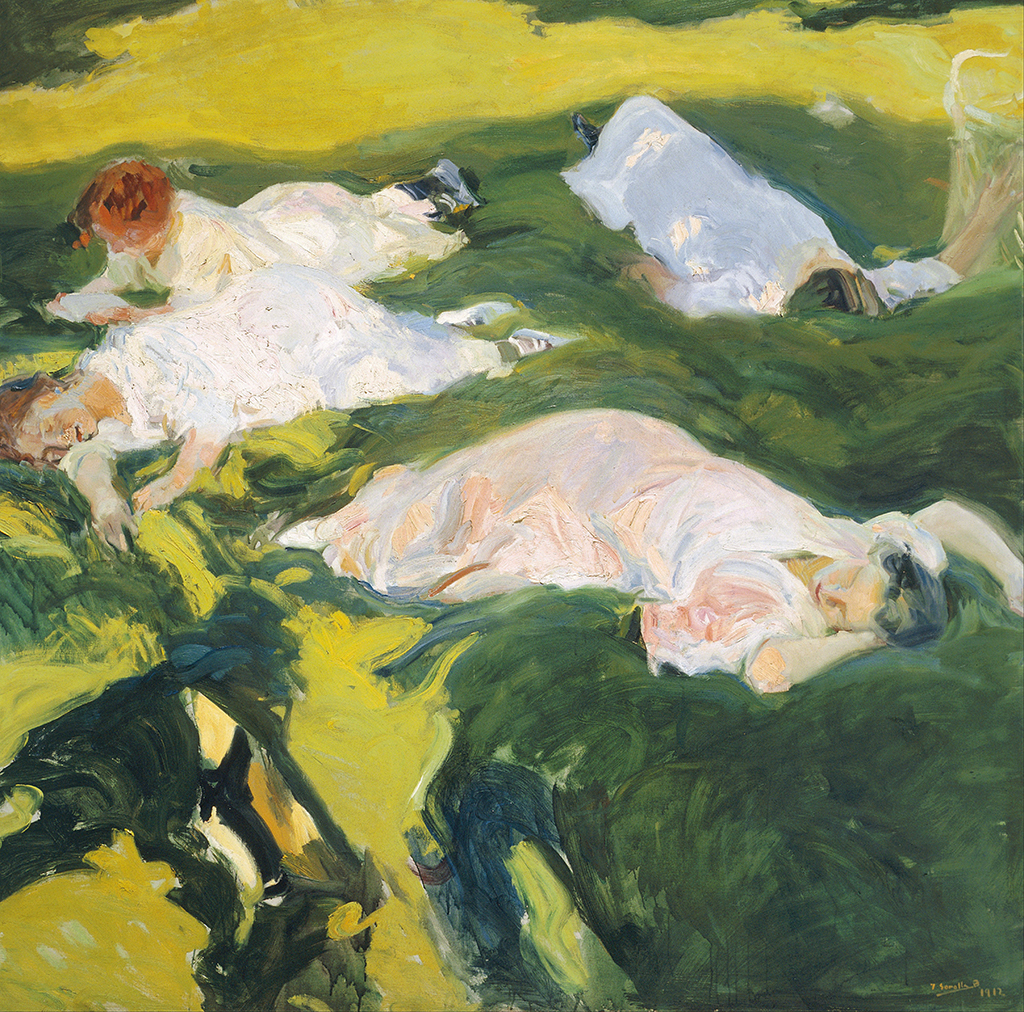This multiple portrait was completed by Joaquin Sorolla in 1911. It now resides in the Museo Sorolla in Madrid, Spain, which is an exciting venue that is totally dedicated to this artist's extensive career.
The outdoor location used here allows Sorolla to incorporate the bright tones of colour that he was just so fond of. His style would perfectly capture the bright nature of Spanish life and he also loved to focus on everyday life, including various cultural pursuits found within the regions in which he lived. The artist's oeuvre has provided us with a beautiful insight into the nature of Spain during the late 19th and early 20th century and the precise nature of his work almost allows us to feel a part of it, all these years later. He would in some cases take on massive canvases in order to avoid any type of restriction on the accurancy and detail of his work, though the majority of his paintings were actually in more typical formats which would be easier for collectors and galleries to store and display. He is seen by many as one of the most important and technically skilled Spanish artists of all time.
La Siesta was a portrait of several members of the artist's family (the artist's wife, their two daughters and also one cousin), a topic that he would re-visit on many occasions, such as also with My Family, My Children and My Wife and Daughters in the Garden. This theme offered the artist a more relaxed working environment in which he could work creatively and experiment, without the additional concerns of using a model who did not know him well. Most of his family portraits would be created purely for pleasure, with the intention of keeping them, rather than selling them on as with many of his other pieces, meaning that these items would hold a particularly personal value to him. Within this composition we find several women and girls strewn around the composition, almost at random, with most simply enjoying the warm sunshine, though one girl at the back appears to be being a little more productive and reading or writing whilst the artist paints.
Sorolla employs fairly dramatic contrasts in lighting here, between the shaded and unshaded areas of the painting. The location of this artwork from 1911 would have been the Spanish region of San Sebastian and several paintings that he produced here would remove any sense of foreground and background, working on a more abstract composition which was flat in perspective. The Little Yacht would be another example of that technique, and one of the advantages of this approach is that the main focal point takes the entire attention of the viewer, leaving no doubt as to what the subject of the piece would be. In terms of a downside, though, some of the artist's background flourishes could sometimes add real interest and also provide a greater context for what we are looking at. The idea of cropping aggressively was an influence from Japanese art for some European artists, particularly within the late 19th century.





